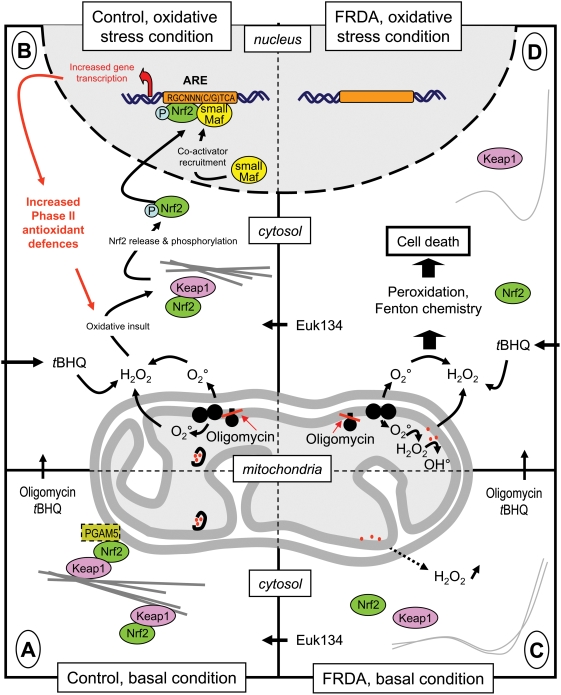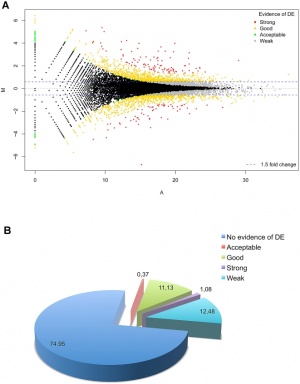User:Z3294943: Difference between revisions
No edit summary |
No edit summary |
||
| Line 34: | Line 34: | ||
===LAB 3=== | ===LAB 3=== | ||
*What is the maternal dietary requirement for late neural development? | *What is the maternal dietary requirement for late neural development? | ||
Iodine is a maternal dietary requirement for neural development with studies showing that it is a key source in providing thyroid associated hormones (T4) to the embryo before the thyroid of the foetus can take over. <ref><pubmed>7750195</pubmed></ref> If pregnant women become iodine deficient the foetus can suffer from hypothyroidism, goitres and abnormalities can arise, such as endemic cretinism. <ref><pubmed>7984194</pubmed></ref> | |||
*Upload a picture relating to your group project | *Upload a picture relating to your group project | ||
Revision as of 14:31, 17 August 2011
--z3294943 11:06, 11 August 2011 (EST)- -z3294943 11:12, 4 August 2011 (EST)
Online Assessment
LAB 1
- Identify the origin of In Vitro Fertilization and the 2010 nobel prize winner associated with this technique.
In 1978, Louise Brown, the first IVF baby was born. In Vitro Fertilisation (IVF) aids couples who may have trouble conceiving or are considered infertile. IVF involves the extraction of both the oocyte (female egg) and spermatozoa (male sperm) with fertilisation occurring outside the human body in a glass dish. Once fertilisation has occurred the zygote is then implanted back in to the female uterus. The idea of human IVF started in the mid 20th century by Robert G. Edwards who had studied fertilisation for many years and in 2010 Edwards was awarded the nobel prize in physiology or medicine. [1]
- Identify a recent paper on fertilisation and describe its key findings.
McAvey B Zapantis, A, Jindal SK, Lieman HJ, Polotsky AJ. (2011 ) How many eggs are needed to produce an assisted reproductive technology baby: is more always better? Fertility Sterility. 96(2):332-5. [2] This paper looked at the optimum number of oocytes that could be used in IVF to give the highest chance of live birth. They found 6-9 oocytes was advantageous in comparison to 5 or less oocytes, as well as, 10 or more oocytes. Thus suggesting more is not always better. This may aid future IVF patients not having to receive multiple treatments.
- Identify 2 congenital anomalies.
Congenital Anomalies are considered to be defects and/or disorders present at birth, such as Achondroplasia & Polydactyly.
--Mark Hill 00:43, 30 July 2011 (EST) Good the citation should be PMID:21718991 or I will show in lab how to generate a reference list.
LAB 2
- Identify the ZP protein that spermatozoa binds and how is this changed (altered) after fertilisation.
There are four Zona Pellucida (ZP) proteins within a human ZP1, ZP2, ZP3, ZP4. Before fertilization can occur the spermatozoa must undergo capacitation within the female uterus, in which the glycoprotein coat is detached from the spermatozoa's arcosomal surface. The zona pellucida surrounding the oocyte contains a glycoprotein ZP3, which acts as a receptor for the acrosome of the spermatozoa. Many spermatozoa release the contents of the acrosome, which lyse and degraded the zona pellucida thus exposing the surface of the oocyte to spermatozoa allowing it to bind to ZP2. The remaining zona pellucida undergoes a cortical reaction in which it increases the intracellular calcium levels causing depolarisation. This process allows the zona pellucida to become impermeable to other spermatozoa preventing polyspermy. ZP3 does undergo some changes after the cortical reaction it loses 1. its sperm binding ability 2. the capacity to promote the release of the spermatozoa's acrosome. [1] Occuring next would be the membrane fusion of the oocyte and spermatozoa.
- Identify a review and a research article related to your group topic. (Paste on both group discussion page with signature and on your own page)
- Review article PMID:11834588 This review looks at many different aspects of DMD and highlights how the lack of the gene dystrophin effects the brain, which may result in cognitive difficulties.
- Research articlePMID:20139167 This research article explores how branching of skeletal muscle causes weakness in the cyclic nature of regeneration and degredation in DMD.
References
- ↑ <pubmed>10341000</pubmed>
LAB 3
- What is the maternal dietary requirement for late neural development?
Iodine is a maternal dietary requirement for neural development with studies showing that it is a key source in providing thyroid associated hormones (T4) to the embryo before the thyroid of the foetus can take over. [1] If pregnant women become iodine deficient the foetus can suffer from hypothyroidism, goitres and abnormalities can arise, such as endemic cretinism. [2]
- Upload a picture relating to your group project
--Mark Hill 15:30, 14 August 2011 (EST) This part is fine. I will be giving a tutorial in next week's lab to fix the referencing.
References

